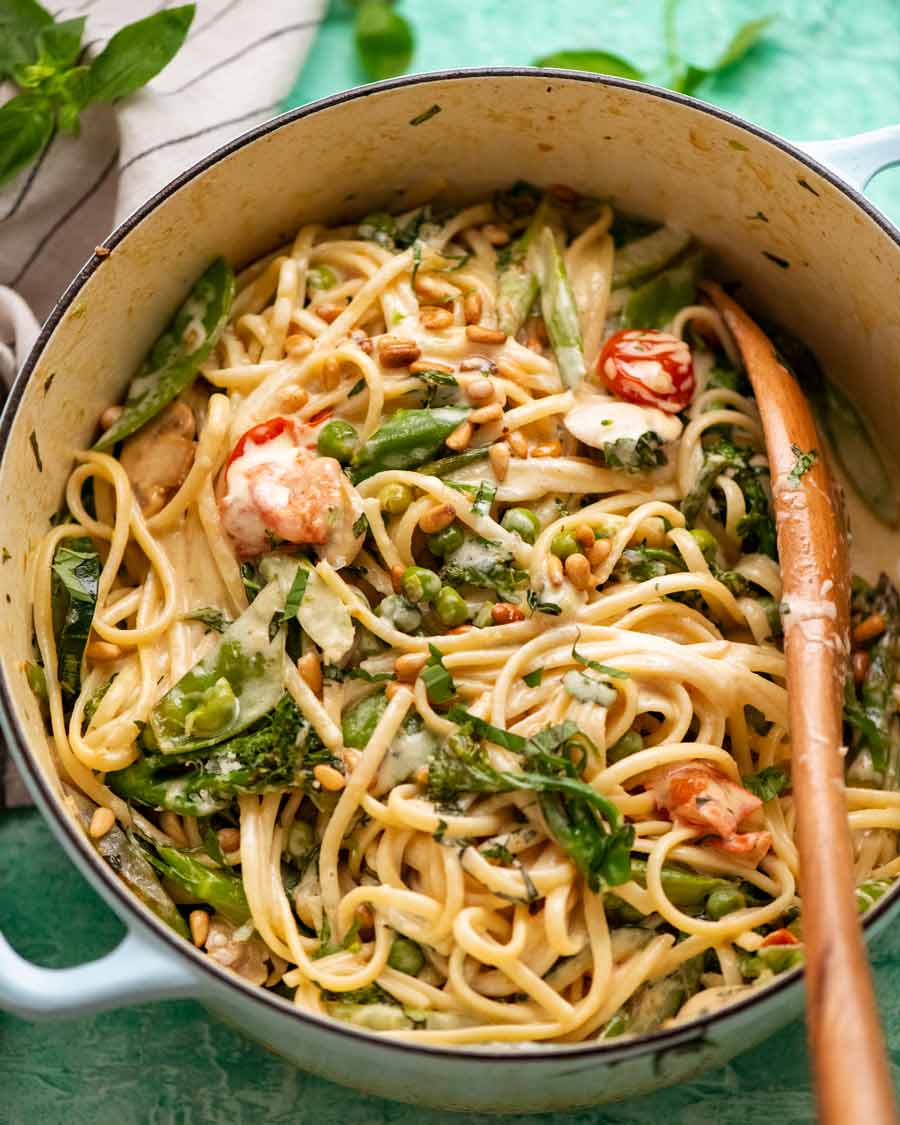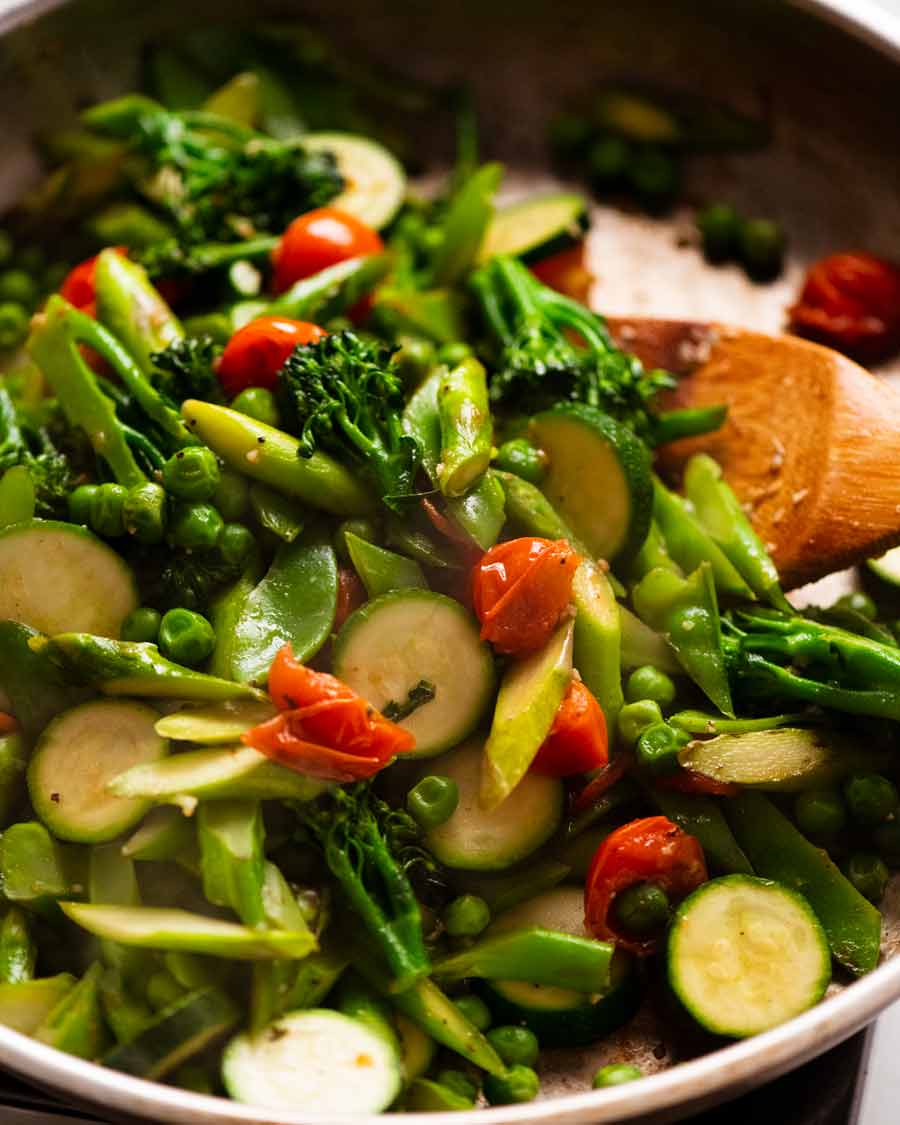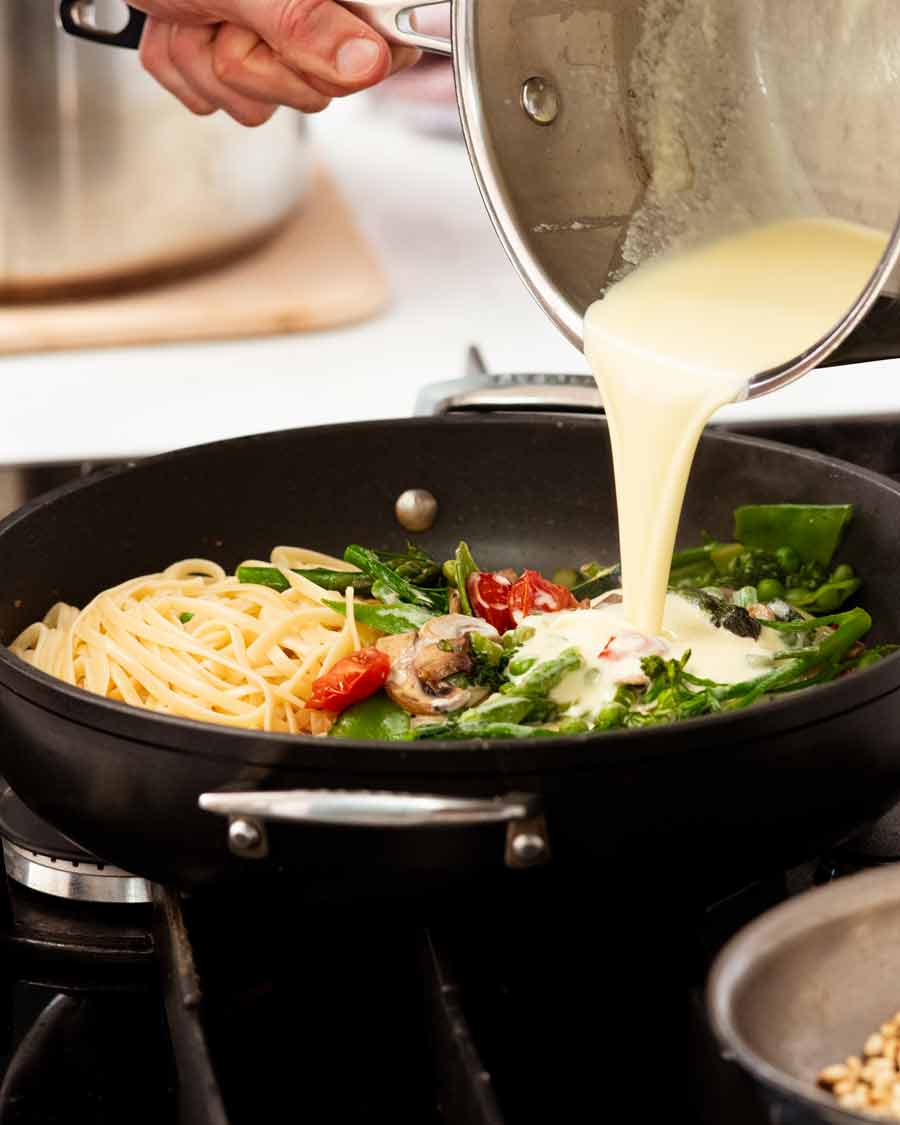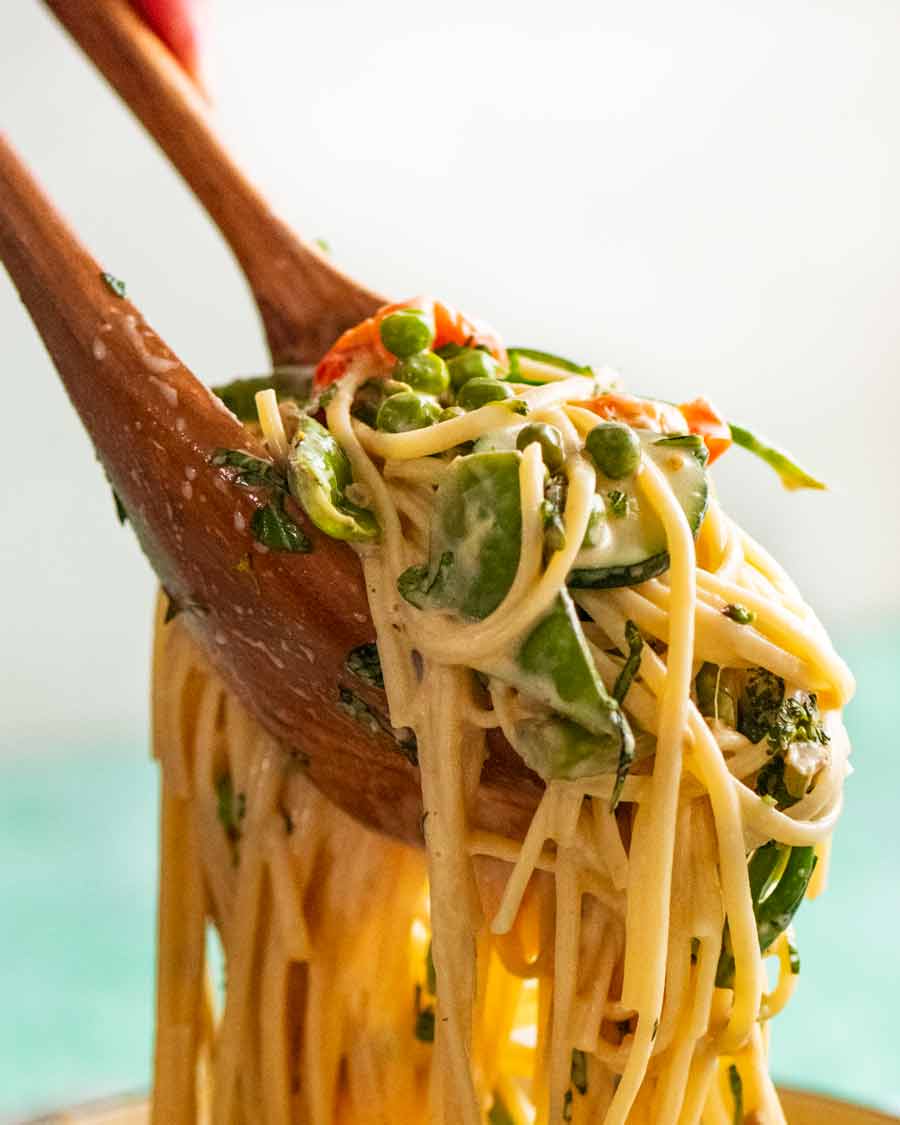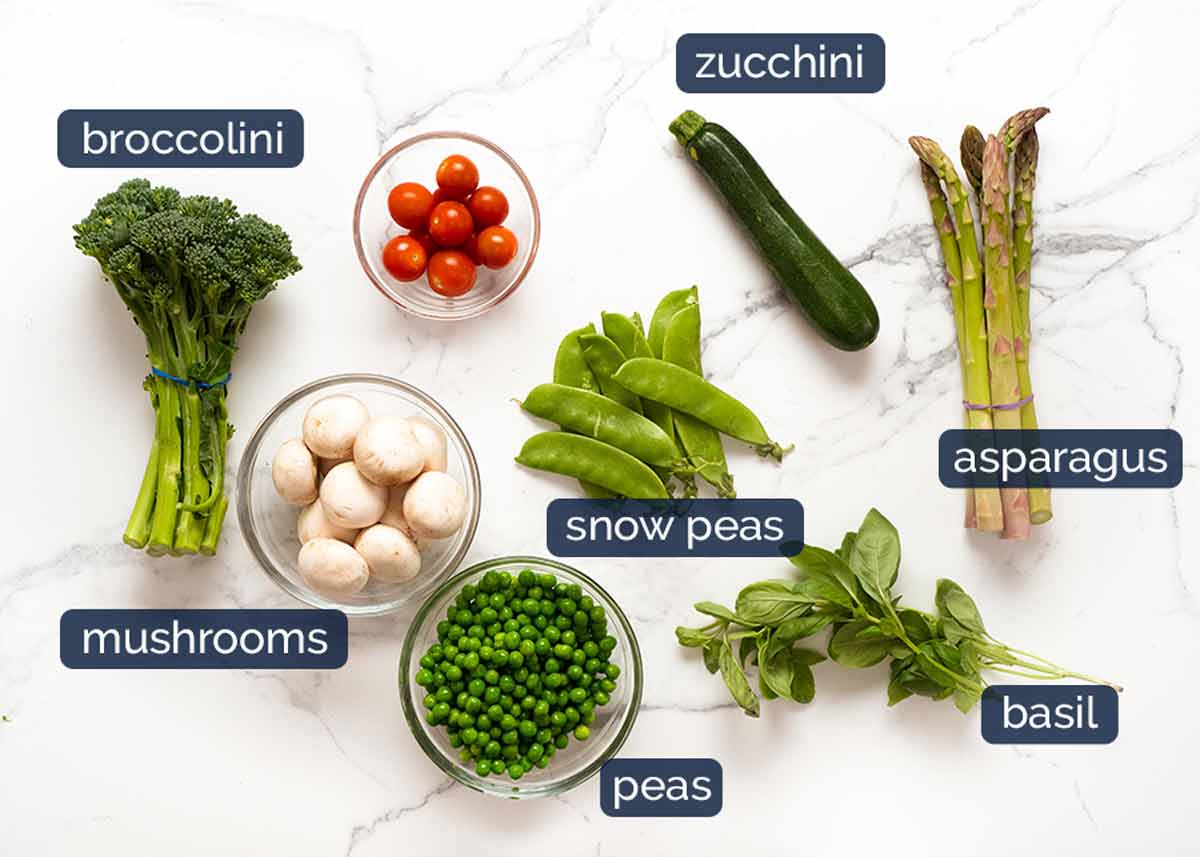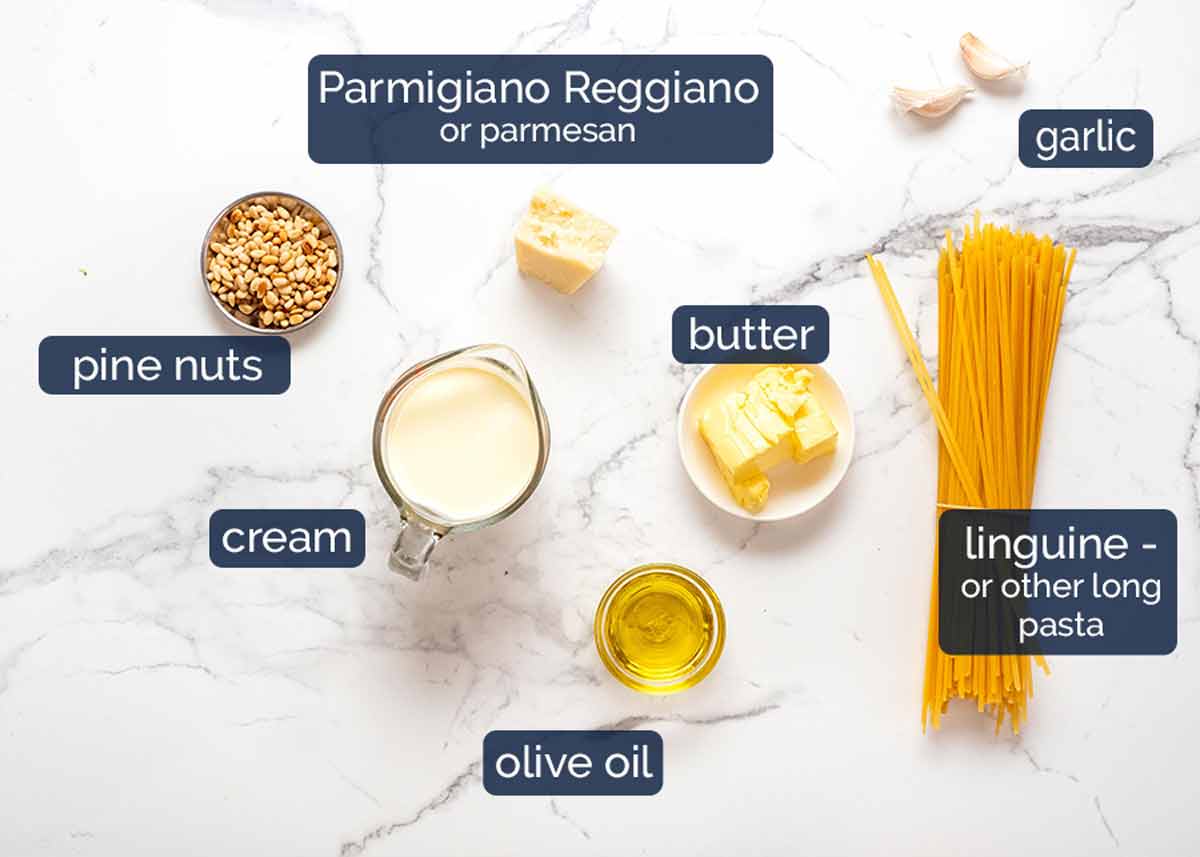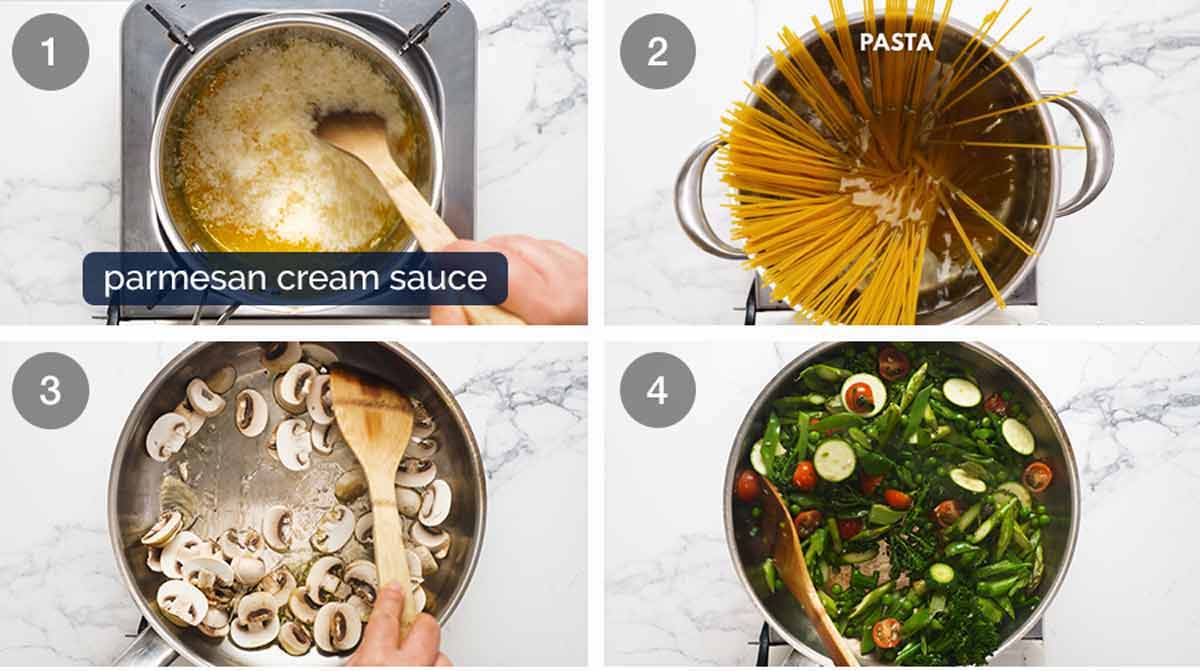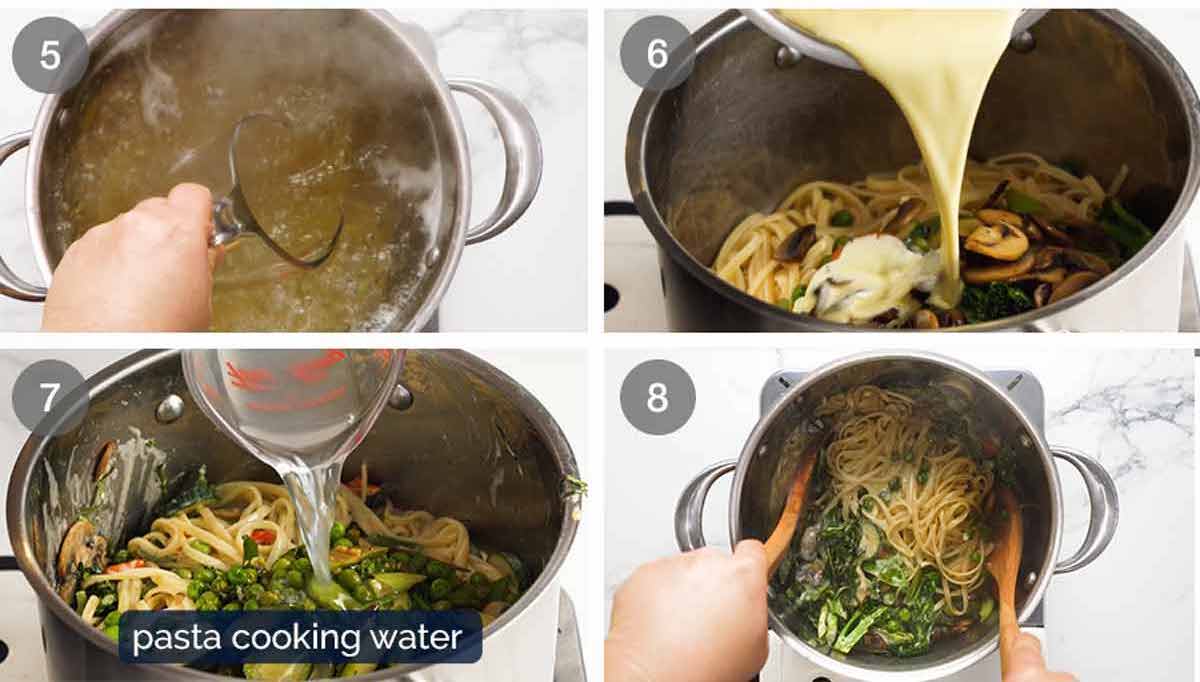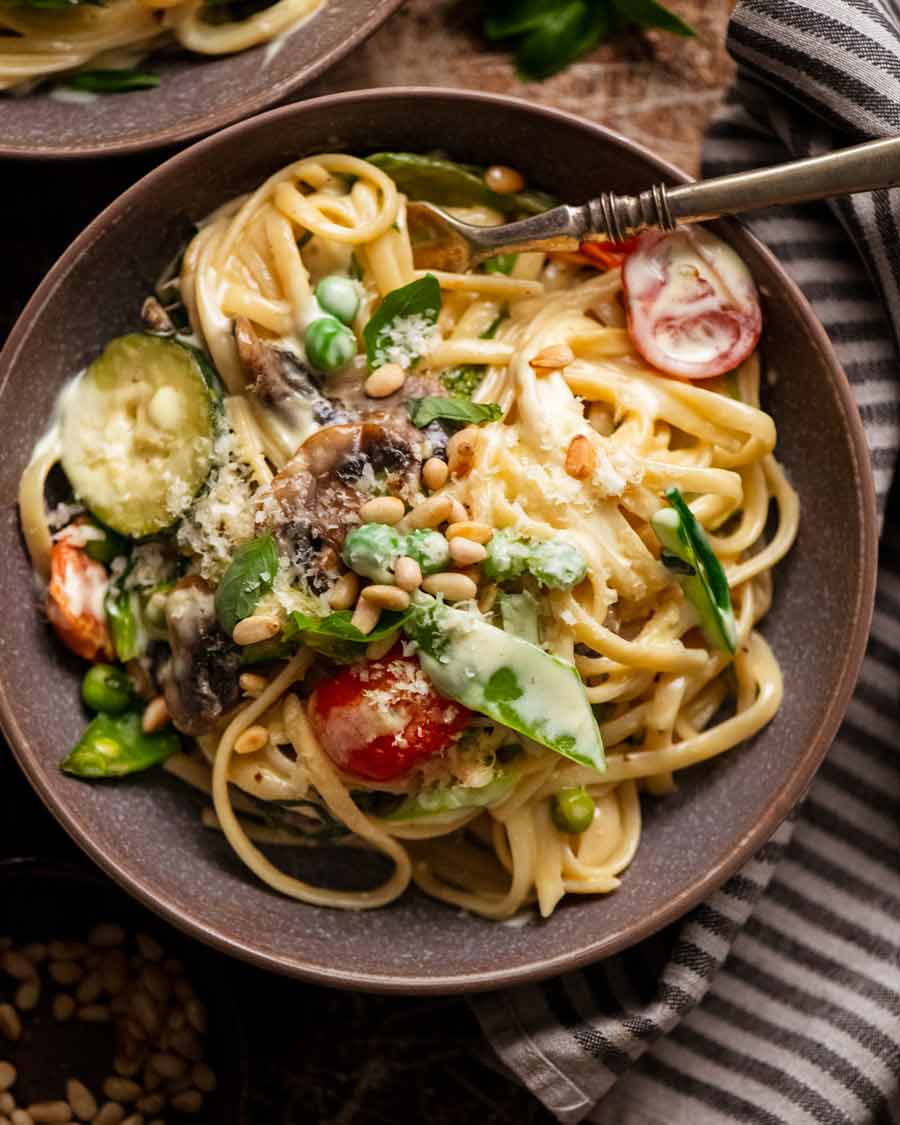Pasta Primavera
Today’s recipe is a big, wholesome vegetable fix disguised in the form of a creamy pasta. So you can pitch it to your clan as a decadent creamy pasta for dinner but know that there’s also a good hit of nutritious vegetables in it too. Life is all about balance, after all! Primavera means “spring” in Italian, and this meatless dish is all about celebrating the best green bounty the season offers up. In this spirit, don’t feel bound by the vegetables I’ve used! Use the best seasonal spring produce you find, or check out my recommendations for substitutions.
The Pasta Primavera story
It is said that this pasta dish was invented in the 1970’s by Sirio Maccioni, the restaurateur behind Le Cirque, a renowned French restaurant in New York City (now closed). I will always have fond memories of Le Cirque. It was the first and only top-end fine dining restaurant I had the luxury of dining at when I travelled to NYC as a broke uni student. My entire trip food budget evaporated in one dinner at Le Cirque, such were the prices (hot dogs and pizza slices it was for the rest of the trip!) But for this starry-eyed greenhorn new to the world of fine dining, it was worth every penny. Of all the amazing dishes I savoured that night, Pasta Primavera is still burned in my mind as the standout. Invented as a dish to celebrate spring produce, there are now many versions of Pasta Primavera around. While researching a recipe for Pasta Primavera, Chef JB and I discovered the origins of the dish could be traced back to Le Cirque, and were able to hunt down the actual recipe from Le Cirque. So it seems sharing the original recipe in all it’s perfect glory is just meant to be!
What you need for Pasta Primavera
1. The vegetables
The vegetables I used in this recipe are as per the Le Cirque restaurant recipe. They’re mostly spring vegetables, as explained. However, absolutely feel free to switch and change to your tastes and/or what’s in season where you are! For each vegetable, I’m including suggestions for substitutions for similar vegetables. However, you can always just use more of another vegetable already in the recipe – or not. Make this dish your own!
Broccolini – With longer, thinner stalks than regular broccoli, the natural shape of broccolini is perfect for tossing through long strand pasta. Substitute: Regular broccoli cut with more stem than you ordinarily would include, stems cut into long thin wedges or thick batons. ie try to mimic the shape of broccolini as best you can.Cherry tomatoes – Or cut regular tomatoes into chunks.Mushrooms – Any kind sliceable! If you only have large ones (like portobello) then just slice and chop into pieces so they are a similar size to slicing mushrooms around 3.5cm / 1.5″.Snow peas – Substitute with green beans, trimmed and cut in half lengthwise.Zucchini – Carrot probably gives the most similar texture in the end result but will take a minute or so longer to cook. Asparagus – More broccolini or zucchini are probably the best substitutes for this. Peas – Just frozen is totally fine in my books. Frozen peas really are better than old fresh peas. If you have home-grown-garden-fresh-organic-peas you’ve shelled yourself, I want to be you. 🙂Basil – A handful of fresh basil really adds that taste of warm weather brightness to this dish. But if you don’t have it, just leave it out because this recipe is absolutely still worth making. Substitute: I’d probably add a squeeze of fresh lemon juice instead, for a touch of freshness.
2. Sauce and pasta
This recipe I’m sharing today is the original as sourced from Le Cirque restaurant in New York City. So it is unapologetically luxurious with a good whack of butter and cream, giving it that truly restaurant-quality finish. I’ve added a note in the recipe for the best way to lighten it for the calorie-counters out there!
Pine nuts – This is the signature ingredient that’s a hallmark of Le Cirque’s version. It adds a distinctive flavour and texture that really makes this recipe unique. I urge you not to skip it!!Parmigiano reggiano – This is true parmesan cheese, with a firm and dry texture perfect for finely grating over dishes and stirring in so it melts into sauces like this. It made according to strictly-regulated Italian methods and is aged a minimum of 24 months, giving it a more complex flavour than regular industrially-produced parmesan cheese.Substitute with non-reggiano parmesan or grana padano. But you MUST finely grate it yourself! If you buy pre-grated, the grains are too large and usually coated with anti-caking agent so it won’t melt smoothly into the sauce.Cream – For the sauce. Thickened / heavy cream is best though regular cream also works. As for low fat? Well, it’s still good but obviously changes the end result. The mouthfeel is less full and rich, and the sauce won’t be as thick so it won’t cling to the pasta as well.Butter – Melted and stirred into the sauce.Garlic – To add tasty flavour to the sautéed vegetables.Olive oil – For cooking the vegetables.Linguine or fettucine. Other long strand pastas also work fine but I do think that flat pastas like linguine work best because the bigger surface area means more sauce cling!
How to make Pasta Primavera
The key to making Pasta Primavera well is to sauté the vegetables in the right order so they all end up perfectly cooked at the same time. Nobody wants soggy, floppy, dull vegetables in their Pasta Primavera! We want perky, green and vibrant vegetables – spring is about the new and fresh remember! Substitute with non-reggiano parmesan or grana padano. But you MUST finely grate it yourself! If you buy pre-grated, the grains are too large and usually coated with anti-caking agent so it won’t melt smoothly into the sauce.
1. Cutting the veg
I won’t cover cutting all the vegetables. Just the ones sliced in non-typical ways (but it’s not hard, I promise!)
2. Cooking
Serve the pasta up immediately! Creamy pastas stay at peak eating for only a short time. The longer you leave it sitting around, the less creamy and silky the sauce will be. The sauce will tend to congeal as it cools, and also gets absorbed by the pasta, making it the dish gluggy. If this happens, just add a splash of pasta cooking water and toss again on the stove to loosen it up again! Cut off the top 3cm / 1.2″ tips and set aside. Then slice the stems on the diagonal into 2.5 cm / 1″ lengths. Slice the stems on the diagonal into 2.5 cm / 1″ lengths. Slice and slice – Stack 2 or 3 snow peas then slice on the diagonal around 1 cm / 0.4″ wide. By this time, all the vegetables should be almost cooked with a slight bite to them still. By this time we finish tossing with the sauce they will be crisp-but-tender, the perfect doneness where the vegetable are cooked but retain some texture. It’s the point at which vegetables are at their most vibrant and sweetest when cooked! Basil & pine nuts – Right at the end, quickly toss through the basil just to disperse, then serve in bowls sprinkled with the pine nuts. I actually filmed this recipe this time last year (Aussie spring 2021) but never got around to publishing the recipe because I put new recipes on pause while I worked on my cookbook. So my team and I have made it again just before sharing the recipe today to double check that it was still as good as we remembered. And it is. I forgot how great this dish really is! I do hope you try it, no matter what season it is where you are. Because while it is hailed as a spring-celebration recipe, you really can make it all year round with whatever vegetables are in season! – Nagi x
Watch how to make it
Love creamy pastas?
Me too! Here are my favourites.
Life of Dozer
Dozer’s debut on TV as part of the cookbook publicity tour!! Is this really happening?? 😂 Watch him on Channel 10’s Studio 10 here. His chef toque, hand made by the publicity manager at my publisher! (in the Uber en route to the studio 😂). I did a cooking demo of the 12 Hour Slow Cooked Lamb…. wearing my lamb print skirt! Fashion faux pas??
